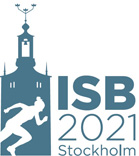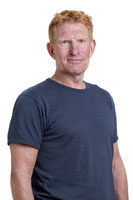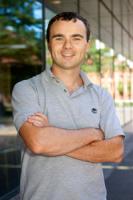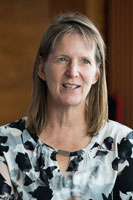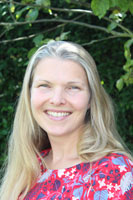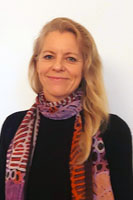Speakers
Award lectures
Muybridge Award lecture (Scott L. Delp)
The Muybridge award is the most prestigious award of the Society. It is awarded for career achievements in biomechanics. The award is named after Eadward Muybridge (1830-1904), who was the first to use cinematography for the study of human and animal movement.
Scott L. Delp, Ph.D., is the James H. Clark Professor of Bioengineering, Mechanical Engineering, and Orthopaedic Surgery at Stanford University. He is the Founding Chairman of the Department of Bioengineering at Stanford, Director of the RESTORE Center, a NIH national center focused on measuring real world rehabilitation outcomes, and Director of the Mobilize Center, a NIH National Center of Excellence focused on Big Data and Mobile Health. Scott is focused on developing technologies to advance movement science and human health. Software tools developed in his lab, including OpenSim and Simtk.org, have become the basis of an international collaboration involving thousands of students and scientists who exchange simulations of human movement. Prior to joining the faculty at Stanford, Delp was on the faculty at Northwestern University and the Rehabilitation Institute of Chicago. He has published over 250 research articles in the field of biomechanics and has recently published a text from MIT Press entitled Biomechanics of Movement: The Science of Sports, Robotics, and Rehabilitation. Professor Delp has co-founded six health technology companies and is a member of the U.S. National Academy of Engineering.
Wartenweiler Award lecture (Susan S. Margulies, Ph.D)
The Wartenweiler Memorial Lecture is given to honour Prof. Jürg Wartenweiler (1915-1976), first President of the ISB, who organized the First International Seminar on Biomechanics in Zürich, Switzerland (1967).
Wallace H. Coulter Chair, Biomedical Engineering
Georgia Institute of Technology and Emory School of Medicine
GRA Eminent Scholar in Injury Biomechanics
Dr. Margulies is the Chair of the Wallace H. Coulter Department of Biomedical Engineering at Georgia Tech and Emory University, and the Georgia Research Alliance Eminent Scholar in Injury Biomechanics. She received her BSE in Mechanical and Aerospace Engineering at Princeton and PhD in Bioengineering from the University of Pennsylvania, and was a post-doctoral fellow at Mayo. With over 30 years of experience in the areas of traumatic brain injury research and pulmonary biomechanics, Dr. Margulies has secured over $35 million in federal, private, and industry funding to discover injury mechanisms on the macro and micro scales, and translate basic research findings to improve clinical outcomes. Dr. Margulies is a Fellow of the American Society of Mechanical Engineers, Biomedical Engineering Society, and American Institute for Medical
and Biological Engineering, and a Member of the National Academy of Engineering and National Academy of Medicine.
The Wallace H. Coulter Department of Biomedical Engineering at Emory University and Georgia Institute of Technology is the only public-private inter-institutional BME department in the nation and is a national leader in translational biomedical engineering research and education. Faculty research focuses on cell manufacturing technologies, biomaterials, imaging and instrumentation, informatics and systems modeling, biomedical robotics, cardiovascular engineering, immunoengineering, neuroengineering, cancer technologies and innovative engineering education methods. Coulter BME is top ranked in the nation (#2) for PhD and undergraduate programs, and graduates the largest number of female and under-represented biomedical engineers annually.
ISB Presidential Lecture
Toni Arndt
ISB Presidential Lecture
Toni Arndt performed his undergraduate studies in New Zealand and Australia in biology and Human Movement Sciences before receiving a scholarship for a PhD at the German Sport University, Köln. His PhD involved studies concerning asymmetrical loading of the Achilles tendon. This line of study continued at the Karolinska Insitute in Sweden as a post-doc and he is still exploring new methods for investigating Achilles tendon function. At present Toni Arndt is a professor in biomechanics, specializing in lower extremity muscle-tendon function, athletic footwear and sports biomechanics, at The Swedish School of Sport and Health Sciences (GIH) in Stockholm. He was Dean of the Research and Doctoral Education Board at GIH for six years. He has published approximately 90 peer reviewed scientific articles and has supervised ten PhD students to completion. In 2020 Toni was awarded the Swedish senior prize for sport science research. He is President of the International Society of Biomechanics.
Keynote lectures
Conor J Walsh
Learning how to move limbs with soft wearable robots
Conor Walsh is the Paul A. Maeder Professor of Engineering and Applied Sciences at the John A. Paulson Harvard School of Engineering and Applied Sciences. He is the is the founder of the Harvard Biodesign Lab, which brings together researchers from the engineering, industrial design, apparel, biomechanics, physical therapy and business communities to develop and translate new disruptive robotic technologies for augmenting and restoring human performance. Example application areas include, enhancing the mobility of healthy individuals, restoring the mobility of patients with gait deficits, assisting those with upper extremity weakness to perform activities of daily living and preventing injuries of workers performing physically strenuous tasks.
The soft exosuit technology is now commercially available in clinics for gait retraining through a collaboration with ReWalk Robotics and a lab spin-out, Verve, has launched a back assist product for workers performing physically strenuous tasks in industry. He is dedicated to training the next generation of biomedical engineering innovators and lab alumni have gone on to successful careers in academia, entrepreneurship, and high tech R&D positions in industry. Additionally, he co-founded the Soft Robotics Toolkit that serves as a platform the lab’s extensive STEM outreach activities. He is the winner of multiple awards including the Presidential Early Career Award for Scientists and Engineers and the MIT Technology Review Innovator Under 35 Award.
Lori Ploutz-Snyder
How do biomechanical factors influence exercise prescription on the International Space Station
Lori Ploutz-Snyder earned her B.S. and M.S. degrees in zoology (1989) and Ph.D. in biomedical sciences (1994) from Ohio University. She conducted post-doctoral research at Michigan State in physiology and radiology especially developing muscle functional MRI techniques. In 1996, she joined the faculty of Syracuse University as an assistant professor in Exercise Science and rose to professor in 2008, while serving as the chair of the Department of Exercise Science from 2004-2008. She worked collaboratively at Syracuse and held joint appointments in Physical Medicine and Rehabilitation, Physiology and Neuroscience, and the Center for Policy Research. In 2008, she joined the NASA Johnson Space Center and University Space Research Association as NASA’s Lead Scientist for exercise physiology and countermeasures. In this role, she was responsible for NASA’s research portfolio for the preservation of cardiovascular, skeletal muscle and bone health during long duration spaceflight. In 2013, she was appointed as a musculoskeletal alterations team leader at the National Space Biomedical Research Institute at Baylor College of Medicine. In July 2016, she was appointed Professor of Movement Science and Dean of the School of Kinesiology at the University of Michigan.
Professor Ploutz-Snyder’s research focuses on skeletal muscle physiology, the development and optimization of exercise programs for special populations and the integrative effects of exercise. This includes identifying targets for exercise intervention such as functionally relevant thresholds of muscle strength or aerobic fitness. She has worked with diverse populations ranging from athletes and NASA astronauts to frail elderly, stroke survivors, children with cerebral palsy and adults with Down Syndrome.
Hazel Screen
Tendon structure-function relationships in health and disease: Exploring the interfascicular matrix
Hazel Screen is Professor of Biomedical Engineering and Head of the School of Engineering and Materials Science at Queen Mary University of London. Her research centres on healthy and pathological tissue structure-function behaviour and its interplay with mechanobiology.
She has a particular long-standing interest in tendon and ligament, and leads a highly multidisciplinary group which spans human and animal in vivo and in vitro studies of tendon function and injury, taking a multiscale approach to exploring tendon mechanobiology from the nano- to micro-scale. She has established and is now further exploring a new paradigm associated with the aetiology of tendon injury.
Screen also leads the UK Organ-on-a-Chip Technologies Network and co-directs the Centre for Predictive in vitro Models at QMUL, within which she leads a research group specifically focused on developing novel in vitro models of musculoskeletal tissues which integrates her expertise in mechanobiology and structure-function into new models to explore health and disease.
Bronwen Ackermann
Music Performance Biomechanics – using biomechanical principles to guide rehabilitation of injured musicians
Associate Professor Bronwen Ackermann is a specialist musicians’ physiotherapist, musculoskeletal anatomist and medical science researcher focussing on musicians’ health at the University of Sydney. Her research has focussed on interventions that can inform evidence-based approaches to optimising musical performance as well as preventing, assessing and managing performance-related injuries in musicians. Her research has utilised technologies including electromyography, 3D motion capture and fMRI imaging technology to better understand mechanisms underpinning healthy and pathological muscle usage patterns during musical performance. Additionally, she has worked extensively clinically with musicians using qualitative motion analysis, including video feedback and fine-motor coordination assessment, particularly for music-specific actions involving the upper limb, as well as orofacial and respiratory structures.
She was responsible for developing and leading the intensive Essentials of Performing Arts Medicine annual training course for the Performing Arts Medicine Association(PAMA) and American College of Sports Medicine (USA), authored an online e-health training program for musicians (www.soundperformers.com), led the first international occupational health and safety program for a national cohort of orchestral musicians (Sound Practice), and worked as the High Performance Consultant at the Australian National Academy of Music from 2012-2020. Internationally she collaborates extensively in research, teaches on a wide range of musicians’ health topics, and has authored over 70 publications. Currently, she is a Humboldt Fellow in Germany, evaluating a clinical movement retraining program she designed to assess and treat task-specific movement dysfunctions, specifically embouchure (orofacial) dystonia and focal hand dystonia.
Read more on the presentation
This presentation will illustrate some of the complexities of evaluating movement performance biomechanics, and the potential role of this in both preventing and managing injuries in musicians. Musicians have long been regarded as fine motor athletes, with hours of daily training necessary to hone the required highly complex physical skills, to then be executed often under stressful conditions. Musicians can have very long careers, but the alarmingly high rate of performance health issues relating to movement dysfunctions warrants further investigation of optimising movements during performance. This field has only attracted such research in recent years, and so investigations incorporate observational and laboratory approaches, aiming to translate better movement patterns into getting a musician back on stage with better health and sound outcomes. In our research laboratory, t has been a particular interest to study whether we can optimise performance outcomes – better sound and reduced injury – by a range of interventions aiming to optimise the interface between the musicians and their instrument. This presentation aims give an overview of some of the research done in laboratory and field settings to date, including: the effect of pain and fatigue on musical movements; retraining movements (kinetic chain action) in musicians’ motor control disorders; the impact of posture on muscle activity patterns; the influence of anthropometrics on playing movements; and challenges in measuring and observing these fine and fast movements. Musical demonstrations and examples will accompany the presentation to illustrate the key points.
Yves C. Vanlandewijck
The Role of Biomechanics in Evidence-Based Paralympic Classification
Yves C. Vanlandewijck is Professor in Rehabilitation Sciences at the Faculty of Kinesiology and Rehabilitation Sciences of the University of Leuven, Belgium, and guest-professor at the Swedish School of Sport and Health Sciences (GIH), Stockholm, Sweden. His research interests include exercise physiology, biomechanics and ergonomics, applied to individuals with locomotor impairment, in a rehabilitation to elite sports continuum. His main research applications focus on the development of evidence-based classification systems in Paralympic sports to ensure fairness in athletic competition categories. Since 2014, the research unit of Prof. Yves Vanlandewijck is recognized and funded by the International Paralympic Committee (IPC) as the Research & Development Centre for Classification in Athletes with Intellectual Impairment.
From 1997 to 2001, Prof. Yves Vanlandewijck was the vice-president of the International Federation of Adapted Physical Activity; he is the founding editor of the European Journal of Adapted Physical Activity and the editor of the IOC Series Books “The Paralympic Athlete” (2011) and “Training & Coaching the Paralympic Athlete” (2016). He was a member of the IOC Medical and Scientific Working Group and member of the Associations Board of the International Council of Sport Science and Physical Education. He is a member of the Sport Science Committee of the IPC since 1995 and Chairperson from 2003 to 2018. In 2017, Prof. Yves Vanlandewijck delivered the Joseph B. Wolffe Memorial Lecturer opening the ACSM Annual Meeting in Denver, Colorado, with a lecture entitled: “Crossroads and Conflicts – Olympics, Paralympics or Cyber Olympics”. In 2019, he received the Paralympic Scientific Award for his lifetime contribution to Paralympic research and the Paralympic Movement.
